The 1954 Awardees
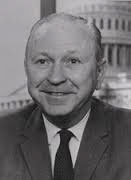
Hon. J. Caleb Boggs
(1909-1993)
LLB 1937Wilmington, DE
James Caleb Boggs, who served as a Governor, United States Congressmen, and United States Senator from the State of Delaware, received the John Carroll Award in ceremonies held at the Waldorf-Astoria Hotel, New York, NY on April 29, 1954.
Born in 1909, Boggs received his undergraduate degree from the University of Delaware in 1931 and his law degree from Georgetown in 1937. A veteran of World War II, Boggs began his career as a Republican candidate for the state's at-large Congressional district. He served three terms in the House, and was tapped to run as the party's candidate for governor against incumbent Elbert Carvel. With 52 percent of the vote, the 43 year old Boggs was elected governor, the position he held at the time of the award.
After two terms as Governor, Boggs was elected to the United States Senate, serving two terms. A popular figure in Delaware, Boggs did not want to pursue a third term, but was convinced by President Richard Nixon to run for the good of the party. In 1972, Boggs lost his seat by just 3,162 votes to a 29 year old attorney, Joseph R. Biden, who held the seat for the next 36 years.
Boggs retired to private practice in Wilmington, and died in 1993 at the age of 83.
Francis C. Brown
(1902-1966)
LLB 1923, LLM 1924, Honorary Degree 1947Bloomfield, NJ
Francis Brown, chairman of the board of the Schering Corporation, received the John Carroll Award in ceremonies held at the Waldorf-Astoria Hotel, New York, NY on April 29, 1954.
Born in Bethesda, MD, Brown received law degrees from Georgetown in 1923 and 1924 before beginning a law career with the federal government, eventually becoming chief counsel for the Federal Deposit Insurance Corporation.
In 1942, the United States seized the domestic assets of Schering AG, the German pharmaceutical conglomerate, under the Alien Property Custodian Act of 1917. The company was assigned to Leo Crowley, the then-chairman of the FDIC. Not wanting to run two organizations, he asked that Brown serve as custodian of Schering's assets during the war.
Brown had no prior experience in pharmaceuticals but sought to diversify Schering's U.S. portfolio, which was almost exclusively in hormone therapy. In 1946, Schering research introduced the first popular antihistamine, Chlor-Trimeton, and sales quadrupled to $15 million annually. In 1953, the company was released from government control, but investors kept Brown as its CEO and chairman; the subsequent discovery of cortisone boosted Schering sales to $80 million by 1957.
On vacation with his family in Brussels in 1966, Brown was killed in an automobile accident. A member of the Board of Regents at the time of his death, the Schering Foundation endowed the Francis Cabell Brown chair in International Law in his memory, the first endowed faculty chair in the University's history.
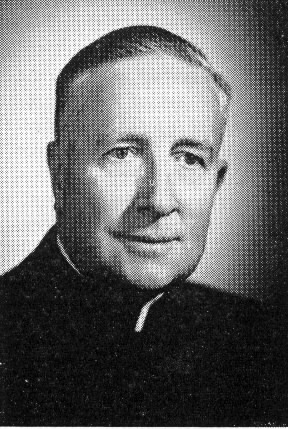
Rev. Robert I. Gannon, S.J.
(1893-1978)
AB 1913, Honorary Degree 1937New York, NY
Robert Gannon, S.J., president of Fordham University from 1936 to 1949, received the John Carroll Award in ceremonies held at the Waldorf-Astoria Hotel, New York, NY on April 29, 1954.
Born in New York in 1893, Gannon arrived at Georgetown in 1909 as a 16 year old from New York's Loyola Prep. He received his degree from Georgetown in 1913 and joined the Society of Jesus that fall. He received an M.A. from Cambridge and a doctorate from the Gregorian University before his ordination, and served as the dean of St. Peter's College before Fordham named him as its 24th president in 1936.
"As a result of my research, I also came to the conclusion that one of the most underappreciated presidents of Fordham was Father Robert I. Gannon," said Msgr. Thomas J. Shelley, who authored a 2016 history of that university. " Father Gannon secured Fordham's reinstatement in the prestigious Association of American Universities after his predecessor had lost it in 1935, upgraded academic standards, appointed the first woman graduate dean, and guided Fordham through the lean years of World War II and the challenges of rapid expansion in the postwar era. He was the first president of Fordham to become a prominent civic figure in New York City." His 23 predecessors averaged four years in the office, Gannon was president for thirteen.
In retirement, Gannon was selected as president of Loyola Prep in 1952, which was scheduled to be closed. Instead, Gannon doubled enrollment in his six year tenure.
The author of seven books and the recipient of 19 honorary degrees, Rev. Gannon died in 1978 at the age of 84.
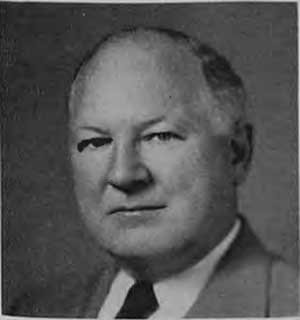
Eugene P. McCahill
(1898-1997)
AB 1921, MA 1922, Honorary Degree 1955Minneapolis, MN
Eugene McCahill, a Minneapolis business executive who served as the first chairman of the Annual Fund and a president of the Georgetown University Alumni Association, received the John Carroll Award in ceremonies held at the Waldorf-Astoria Hotel, New York, NY on April 29, 1954.
Born in Duluth, MN and educated at Chicago's Loyola Academy, McCahill served as a naval aviator in World War I before enrolling at Georgetown, where he ran on the track team and served on the first board of editors at The HOYA. He stayed for a graduate degree in 1922 and hoped to pursue a legal career, but returned to Minneapolis to attend to a family emergency. He began a successful career as a banker and investor in the Twin Cities area, with interests in aviation, mining and utilities.
In addition to his service in World War I, McCahill served as a naval commander in World War II and Korea, and was an active member in Catholic fraternal organizations, including serving as a Knight Commander of the Equestrian Order of the Holy Sepulcher of Jerusalem.
In his later years, McCahill would be a tireless advocate for Georgetown and its alumni. Elected as the first chairman of the Annual Fund in 1954, McCahill traveled a total of 20,000 miles at his personal expense to rally local clubs nationwide to support the effort. He served on the Board of Governors of the Alumni Association and the board of Regents, and in the years following the John Carroll Award received an honorary degree from the University in 1955 and served as president of the Alumni Association from 1956-58, one of only two GUAA presidents ever elected from west of the Mississippi River.
In 1983, a gift from McCahill and three other alumni helped build Alumni Square (aka Village B), a student housing complex located just outside the campus gates. The McCahill Building is named in his honor.
Having retired to Florida, Eugene McCahill died in 1997 at the age of 99.
Raymond H. Reiss
(1897-1986)
AB 1919, Honorary Degree 1935New York, NY
Raymond Reiss, a New York City business executive, received the John Carroll Award in ceremonies held at the Waldorf-Astoria Hotel, New York, NY on April 29, 1954.
Reiss graduated from the College in 1919 as president of the Yard, and began an extensive business career in New York in manufacturing. In 1967, the HOYA provided a synopsis of his accomplishments: "Mr. Reiss is also a director of the Reiss Coal Company, the Reiss Steamship Company, the Schering Corporation, the Irving Trust Company, and the St. Vincent Hospital of New York City. He was chairman of the University's Board of Regents, having been appointed a lay advisor by the Rev. W. Coleman Nevils in 1928.
"Mr. Reiss commented, "I've seen Georgetown grow from a small college. It's been interesting to see how the school has expanded. I have a great loyalty to Georgetown, and I'd like to see the University go ahead. As a director, I'll do whatever is necessary, giving the benefit of my judgment."
Reiss is best remembered for the science building named in his honor in 1962.
Raymond Reiss died in 1986 at the age of 88.
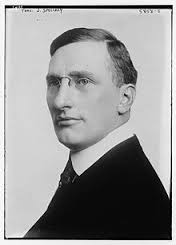
Hon. Thomas J. Spellacy
(1880-1957)
LLB 1901, Honorary Degree 1920Hartford, CT
Thomas Spellacy, former mayor of the city of Hartford, received the John Carroll Award in ceremonies held at the Waldorf-Astoria Hotel, New York, NY on April 29, 1954.
Born in Hartford and educated at Holy Cross, Spellacy received his law degree from Georgetown in 1901 and was a well known figure in Connecticut politics for a half-century. In 1907, he was elected to the Connecticut State Senate. An unsuccessful candidate for mayor in 1912 and 1914, he was named as U.S. Attorney by President Wilson and later served as the legal advisor to the then-secretary of the Navy, Franklin Roosevelt.
A member of the Democratic National Committee, Spellacy was elected mayor of Hartford in 1935, serving for eight years.
At the time of his death, the 77 year old Spellacy served as Insurance Commissioner of the State of Connecticut.
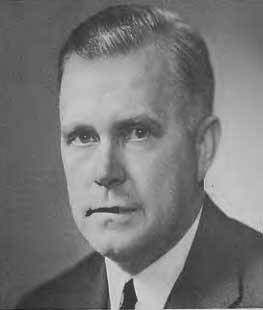
John J. Tunmore
(1909-1993)
PHB 1931Garden City, NY
John Tunmore, president of the Georgetown University Alumni Association from 1952-1954, received the John Carroll Award in ceremonies held at the Waldorf-Astoria Hotel, New York, NY on April 29, 1954.
"Mr. Tunmore came to the attention of your Nominating Committee a year ago because of the energy and interest he displayed in reviving the McDonough Gymnasium campaign in the Metropolitan area," wrote the Georgetown University Alumni Magazine. "At that time he was chosen for membership on the Alumni Board, representing New York City. The keen interest which he has taken in Association affairs in his year's service on the Board naturally brought him to the attention of the 1952 Nominating Committee. He is the youngest President the Association has had in its history. He is a Director of the Georgetown Alumni Club of Metropolitan New York and has always maintained a helpful interest in all the University's objectives. We anticipate a continuation of our advances during his Administration."
A retired insurance executive, John Tunmore died in 1993 at the age of 84.
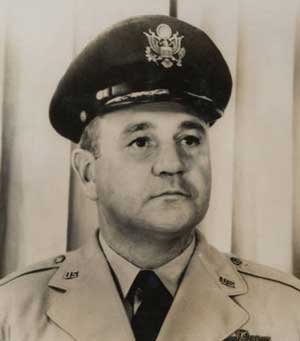
Brig. Gen. Robert W.C. Wimsatt
(1899-1964)
AB 1921Morratico, VA
Robert Wimsatt, commander of the U.S. 20th Air Force in the Korean War, received the John Carroll Award in ceremonies held at the Waldorf-Astoria Hotel, New York, NY on April 29, 1954.
Wimsatt grew up in Washington an arrived at Georgetown in the fall of 1917. He is credited as being the first student to enroll in the nascent ROTC program at the University. He enlisted in the Army Air Service in 1921. He served in assignments from Greenland to Guam, and retired from active service following the Korean War.
Gen. Wimsatt died in 1964.